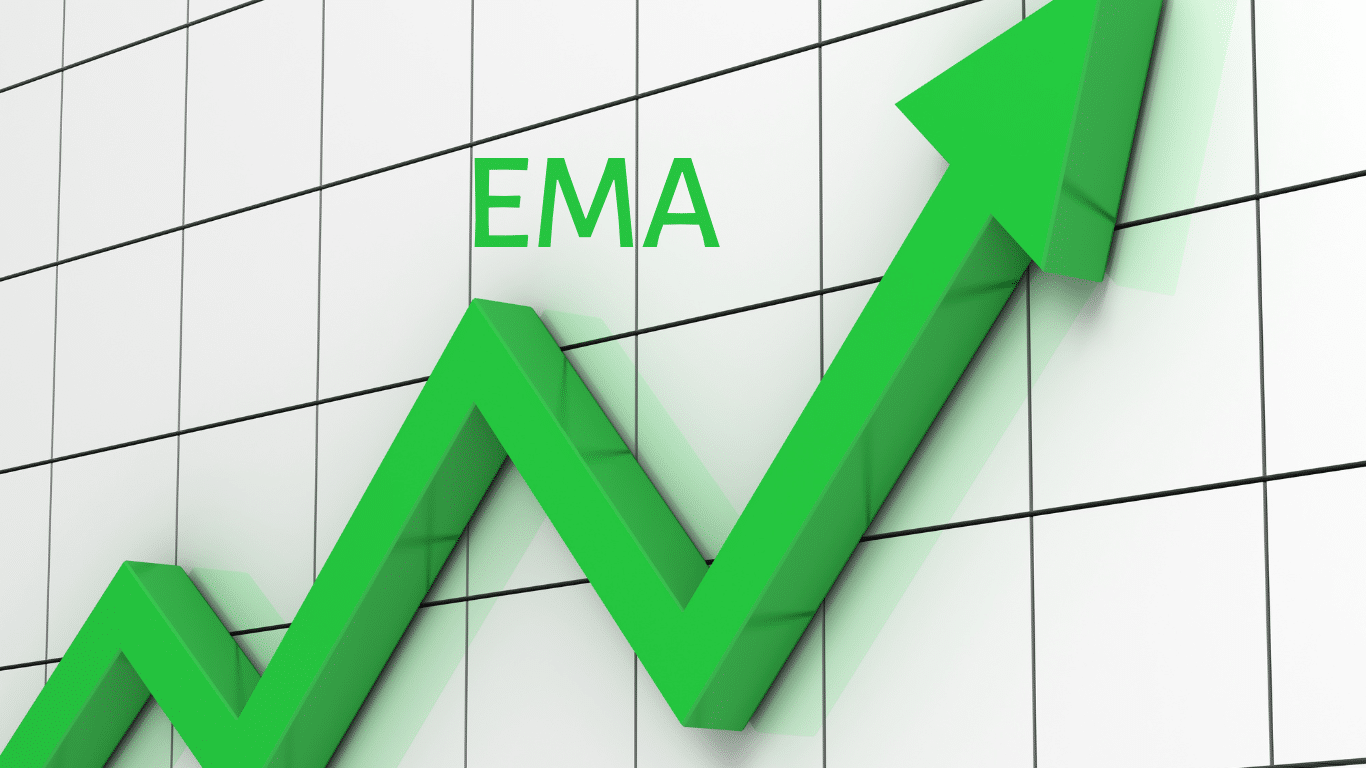- How can the best time frame for ema be used with support and resistance levels to identify potential entry and exit points?
- What are some common pitfalls to avoid when using the EMA in trading?
- How can traders customize EMA settings to suit their trading style and market conditions better?
- How has the EMA evolved, and what future developments can we expect to see in its use in trading?
EMA is a popular technical analysis tool to even out price data and identify trends. The EMA can be calculated for different time frames, such as five days, ten days, 20 days, 50 days, and 200 days. The shorter the time frame, the more responsive the EMA will be to short-term price movements. The longer the time frame, the more smooth the EMA will be, making it more helpful in identifying long-term trends.
The best time frame for ema (exponential moving average) can be used to analyze short-term and long-term market trends. For example, a trader might use a 5-day EMA and a 20-day EMA to identify short-term trends and a 50-day EMA and a 200-day EMA to identify long-term trends. When the shorter-term EMA crosses above or below the longer-term EMA, it can indicate a potential trend reversal.
However, when using EMA to analyze market trends, there are some pitfalls to avoid. For example, too many EMA time frames can lead to confusion and conflicting signals. Additionally, relying solely on EMA to make trading decisions can be risky, as no indicator or tool is foolproof.
Future in EMA: The use of EMA is likely to continue in the future as traders continue to seek out tools and techniques to identify trends and make trading decisions. As technology advances, the future of EMA is expected in more advanced trading algorithms and strategies.
Pitfalls to Avoid: When using EMA, traders should consider other indicators and analysis techniques, such as trendlines, support and resistance levels, and other technical indicators. Additionally, traders should always be aware of market conditions and economic events that can impact price movements and use risk management strategies to protect their investments.
EMA can be useful for analyzing short-term and long-term market trends. Still, it should be used alongside other indicators for better results. Traders should also be aware of the pitfalls of EMA and use risk management strategies to protect their investments.

How can the best time frame for ema be used with support and resistance levels to identify potential entry and exit points?
Firstly, traders need to identify support and resistance levels. Support levels are price levels where buying pressure is expected to be strong, while resistance levels are price levels where selling pressure is expected to be strong. These levels can be identified using price charts and various technical analysis tools, such as trendlines, moving averages, and Fibonacci retracements.
Traders can use the EMA to confirm support and resistance levels. When the price is trading above the EMA, it can indicate that the trend is bullish, and traders may look for buying opportunities at or near support levels. When the price is trading below the EMA, it might imply a bearish trend, and traders may seek for selling opportunities at or around resistance levels.
The EMA, support, and resistance levels can help traders decipher probable entry and exit locations. For example, when the price bounces off a support level and crosses above the EMA, it can indicate a possible buying opportunity. Conversely, when the price falls below a resistance level and crosses below the EMA, it can mean a potential selling opportunity.
The EMA can also confirm the overall trend. When the shorter-term EMA crosses above the longer-term EMA, it can indicate a bullish trend, while a cross below can indicate a bearish trend. Traders can use these crosses to confirm trends and potential entry or exit points.
Using the EMA with support and resistance levels can effectively identify potential entry and exit points in trading. Traders can use the EMA to confirm support and resistance levels, identify likely buying and selling opportunities, and confirm the overall trend. However, traders should also consider pitfalls to avoid, market conditions, and economic events and use risk management strategies to protect their investments.
What are some common pitfalls to avoid when using the EMA in trading?

- False signals: One of the biggest pitfalls of using the EMA is false signals. These occur when the price crosses above or below the EMA but quickly reverses direction, resulting in a losing trade. False signals can occur more frequently in choppy or sideways markets where the price is range-bound and lacks a clear trend.
- Choppy markets: Choppy markets can be challenging for traders who rely on the EMA to identify trends and potential entry and exit points. In choppy markets, the EMA can produce many false signals, making it difficult to make informed trading decisions.
- Over-reliance on EMA: Another pitfall to avoid is over-reliance on the EMA. While the EMA can be a valuable tool for identifying trends and potential entry and exit points, it should be used with other technical indicators and analysis techniques. Over-reliance on the best time frame for EMA can lead to confirmation bias and prevent traders from seeing the bigger picture.
- Choosing inappropriate time frames: Choosing the wrong time frames for the EMA can also lead to false signals and ineffective trading decisions. For example, using a very short-term EMA may be effective for scalping or day trading but may produce false signals in longer-term trades. Similarly, using a very long-term EMA may be effective for identifying long-term trends but may not provide useful information for short-term trades.
- Ignoring market conditions: Finally, ignoring market conditions can also lead to ineffective use of the EMA. Market conditions, such as economic events, news announcements, and geopolitical factors, can impact price movements and render the EMA less effective. Traders should always know market conditions and adjust their trading strategies accordingly.
In conclusion, using the EMA in trading can be effective. Still, traders should watch out for common pitfalls such as false signals, choppy markets, over-reliance on the EMA, inappropriate time frames, and ignoring market conditions. Traders should use the EMA in conjunction with other technical indicators and analysis techniques, such as support and resistance levels, trendlines, and other oscillators, to make informed trading decisions. Additionally, traders should always use risk management strategies to protect their investments.
How can traders customize EMA settings to suit their trading style and market conditions better?
- Choose the appropriate time frame: The best time frame for ema can vary depending on the trader’s trading style and market conditions. For example, short-term traders may use a 5- or 10-period EMA, while longer-term traders may use a 50- or 200-period EMA. Choosing the best time frame for ema can help traders better identify trends and possible entry and exit points.
- Adjust the smoothing factor: The smoothing factor, also known as the weighting factor, determines the level of importance given to recent price data. By adjusting the smoothing factor, traders can make the EMA more or less responsive to changes in price. For example, decreasing the smoothing factor can make the EMA more responsive to short-term price movements, while increasing the smoothing factor can make the EMA less responsive to short-term price movements.
- Combine EMAs: Traders can also combine multiple EMAs with different time frames to create a trading strategy that suits their style and market conditions. For example, traders may use a combination of a short-term EMA and a longer-term EMA to identify short-term and long-term trends.
- Use multiple time frames: Traders can also use various time frames to analyze price movements and identify potential entry and exit points. For example, traders may use a shorter-term EMA on a lower time frame to identify short-term trends and a longer-term EMA on a higher time frame to identify long-term trends.
- Consider market conditions: Finally, traders should consider market conditions when customizing EMA settings. For example, in volatile markets, traders may want to use a shorter-term EMA to be more responsive to sudden price movements, while in stable markets, traders may want to use a longer-term EMA to filter out noise.
In conclusion, traders can customize the settings to better suit their trading style and market conditions by choosing the best time frame for ema, adjusting the smoothing factor, combining EMAs, using multiple time frames, and considering market conditions. Traders should also use other technical indicators and analytical tools to make educated trading decisions, and risk management tactics should always be used to protect their capital.
How has the EMA evolved, and what future developments can we expect to see in its use in trading?

- Development of the EMA formula: The EMA formula was developed in the 1960s to improve the simple moving average (SMA). The EMA formula focuses more on recent price data and is, therefore, more responsive to changes in price compared to the SMA.
- Advancements in computing technology: The widespread use of computers in the 1980s and 1990s made it easier for traders to calculate and plot EMAs on charts. This increased the popularity of the EMA as a technical analysis tool.
- Customization options: As traders became more familiar with the EMA, they experimented with different settings to better suit their trading style and market conditions. This led to the development of different variations of the EMA, such as the weighted moving average (WMA) and the smoothed moving average (SMMA).
- Integration with other technical indicators: The EMA is often used with other technical indicators. This integration allows traders to analyze price movements from multiple perspectives and make more informed trading decisions.
- Future potential: We can expect to see the continued development of the EMA and its use in trading. For example, further customization options may allow traders to adjust the EMA formula based on specific market conditions. Furthermore, the future in artificial intelligence and machine learning may result in the development of more sophisticated algorithms and a future role for EMA as a fundamental component.
In conclusion, the EMA has evolved over time to become a widely used technical analysis tool in trading. Traders can customize the EMA settings to better suit their trading style and market conditions and use it with other technical indicators. We may anticipate EMA and its usage in trading to have a future as technology progresses.




